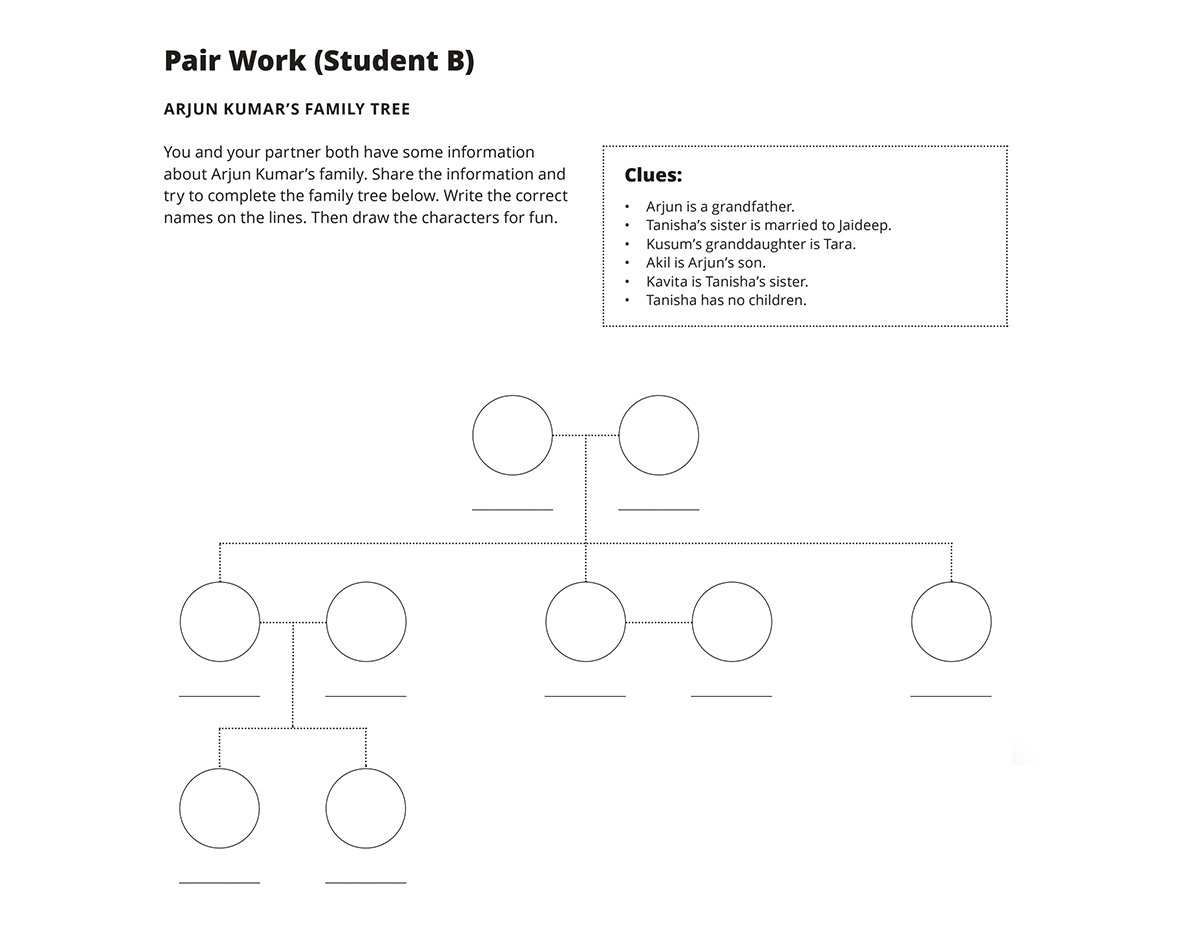Harnessing the power of meditation to cultivate resilience is a journey of self-discovery and inner strength. This guide delves into the multifaceted relationship between meditation and resilience, exploring the science behind its effectiveness and providing practical techniques to integrate these practices into daily life. From understanding the fundamentals of meditation and its diverse types to navigating the challenges of consistent practice, this comprehensive resource empowers you to build lasting resilience.
By exploring the neurological and psychological benefits of meditation, this guide provides a roadmap for building resilience. We will uncover how meditation techniques can directly impact stress reduction and foster a more positive and balanced mental state. Furthermore, this resource will equip you with practical tools and strategies to overcome common obstacles, ultimately helping you develop a sustainable meditation practice that empowers you to face life’s challenges with greater fortitude.
Introduction to Meditation and Resilience

Meditation and resilience are deeply interconnected, with meditation serving as a powerful tool for cultivating mental fortitude and navigating life’s challenges. This exploration delves into the fundamental concepts of both, highlighting how meditative practices can enhance resilience and improve overall well-being. Understanding this relationship is crucial for anyone seeking to build greater emotional strength and navigate stressful situations effectively.Resilience, in essence, is the capacity to adapt and thrive in the face of adversity.
It encompasses psychological flexibility, emotional regulation, and the ability to bounce back from setbacks. Meditation, on the other hand, is a practice focused on training the mind to achieve a state of mental clarity and emotional balance. These two concepts are deeply intertwined; by cultivating a more mindful and resilient state of mind through meditation, individuals can better navigate the stressors of life and emerge stronger.
Fundamental Concepts of Meditation
Meditation encompasses a broad range of techniques, each aiming to cultivate a specific mental state. Mindfulness meditation, for example, involves paying attention to the present moment without judgment. Loving-kindness meditation fosters feelings of compassion and goodwill towards oneself and others. Other techniques, like transcendental meditation, utilize specific mantras or sounds to induce a deep state of relaxation.
Each approach has its unique attributes, and their effectiveness varies based on individual needs and preferences.
Stress, Mental Health, and Resilience
Stress is a ubiquitous aspect of modern life, and prolonged exposure can negatively impact mental health. Chronic stress can lead to anxiety, depression, and other mental health conditions. Resilience acts as a buffer against these negative effects. Individuals with higher levels of resilience are better equipped to manage stress and its impact on their mental well-being. Meditation practices can be instrumental in building this resilience by providing tools to regulate emotional responses to stressful situations.
Meditation and Resilience: Fostering Inner Strength
Meditation offers a structured approach to cultivating resilience. Through regular practice, individuals can develop greater self-awareness, emotional regulation skills, and a sense of inner peace. These qualities are fundamental to resilience, allowing individuals to navigate challenging situations with greater equanimity and composure. The ability to stay centered amidst chaos becomes a powerful asset in building a resilient mind.
Comparison of Meditation Techniques and Their Effects on Resilience
| Meditation Technique | Description | Potential Effects on Resilience |
|---|---|---|
| Mindfulness Meditation | Focuses on present moment awareness, without judgment. | Improved self-awareness, reduced reactivity to stress, increased emotional regulation. |
| Loving-Kindness Meditation | Cultivates feelings of compassion and goodwill towards oneself and others. | Increased empathy, reduced stress response, enhanced emotional well-being. |
| Transcendental Meditation | Utilizes specific mantras to induce a state of deep relaxation. | Reduced stress hormones, improved focus and concentration, increased feelings of peace. |
| Yoga | Combines physical postures, breathing techniques, and meditation. | Improved physical and mental well-being, enhanced body awareness, increased flexibility in responding to stress. |
Understanding the Science Behind Meditation and Resilience

Meditation’s impact on resilience is increasingly supported by scientific research. This section delves into the neurological and psychological mechanisms through which meditation fosters resilience, examining the effects on the brain and body, and highlighting the role of neuroplasticity in this process. We’ll also explore how meditation influences stress responses, and the physiological changes that accompany the practice.Meditation, when practiced regularly, can significantly alter brain activity and promote mental well-being.
This alteration is supported by neurobiological changes that directly impact the brain’s ability to manage stress and promote emotional regulation. The following sections will detail these mechanisms.
Neurological Effects of Meditation on the Brain
Meditation’s impact on the brain is multifaceted, affecting various regions and influencing their function. These changes contribute to improved emotional regulation and stress response, ultimately fostering resilience.
- Prefrontal Cortex Activation: Meditation practices often result in increased activity in the prefrontal cortex, the brain region associated with higher-level cognitive functions, including planning, decision-making, and emotional regulation. This heightened activity strengthens the prefrontal cortex’s ability to regulate emotional responses, leading to improved resilience.
- Amygdala Regulation: The amygdala, a brain region crucial in processing emotions, particularly fear and anxiety, can be modulated through regular meditation practice. Meditation techniques, such as mindfulness and loving-kindness meditation, have been shown to reduce the amygdala’s hyperactivity, leading to a more balanced emotional response to stress.
- Hippocampus Strengthening: The hippocampus, vital for learning, memory, and emotional regulation, demonstrates increased volume and function with meditation practice. This increased strength in the hippocampus can enhance the brain’s ability to cope with stress and promote long-term resilience.
Impact of Meditation on Stress Reduction
Research consistently demonstrates a strong correlation between meditation and stress reduction. These practices provide a tangible method for managing stress and promoting overall well-being.
- Cortisol Reduction: Meditation practices, including mindfulness meditation, have been linked to a decrease in cortisol levels, the primary stress hormone. Lower cortisol levels can contribute to a more balanced physiological response to stress, and a greater ability to bounce back from stressful situations.
- Autonomic Nervous System Regulation: Meditation helps regulate the autonomic nervous system (ANS), which controls involuntary bodily functions. Through meditation, the balance between the sympathetic (fight-or-flight) and parasympathetic (rest-and-digest) branches of the ANS can be restored, leading to reduced stress responses and improved emotional regulation. This regulation is a key factor in building resilience.
- Stress Response Modulation: Studies have shown that meditation can alter the brain’s response to stressful stimuli. By reducing the activation of stress response pathways, meditation promotes a more adaptive and less reactive approach to challenges.
Neuroplasticity and Resilience
Neuroplasticity, the brain’s ability to reorganize itself by forming new neural connections throughout life, plays a critical role in building resilience through meditation.
“Regular meditation practice can induce structural and functional changes in the brain, supporting the development of resilience.”
This neuroplasticity allows individuals to adapt and overcome challenges more effectively.
- Adaptive Neural Pathways: Meditation can facilitate the creation of new neural pathways associated with emotional regulation and stress management. These adaptive neural pathways provide individuals with more effective strategies for coping with stressful experiences, thus increasing resilience.
- Brain Reorganization: Regular meditation practice contributes to the reorganization of brain regions associated with stress and emotion processing. This reorganization enables the brain to respond to stress more effectively and maintain emotional equilibrium, fostering resilience.
Physiological Changes During Meditation and Resilience
Meditation practices often result in observable physiological changes that correlate with increased resilience.
| Brain Region | Activation During Meditation | Potential Impact on Resilience |
|---|---|---|
| Prefrontal Cortex | Increased activity | Improved emotional regulation, decision-making, and stress management |
| Amygdala | Decreased activity | Reduced emotional reactivity and anxiety |
| Hippocampus | Increased volume and function | Enhanced learning, memory, and emotional regulation |
| Anterior Cingulate Cortex | Modulated activity | Improved attention, impulse control, and emotional awareness |
Practical Meditation Techniques for Building Resilience

Cultivating resilience involves developing the ability to bounce back from challenges and setbacks. Meditation, a practice focused on training attention and awareness, can significantly contribute to this process. By engaging in regular meditation, individuals can foster emotional regulation, reduce stress, and cultivate a greater sense of inner peace, all of which are crucial for building resilience.Effective meditation techniques offer a structured approach to cultivating mindfulness and inner peace, enhancing our capacity to navigate life’s inevitable difficulties.
These techniques, when integrated into daily routines, provide a powerful tool for building resilience and improving overall well-being.
Body Scan Meditation
Body scan meditation is a technique that involves systematically bringing awareness to different parts of the body, noticing sensations without judgment. This practice fosters a deeper connection with the physical self, promoting relaxation and reducing stress.To begin, find a comfortable seated or lying position. Close your eyes gently. Bring your attention to your toes, noticing any sensations – warmth, coolness, tingling, pressure.
Observe these sensations without trying to change them. Gradually move your awareness up your body, from toes to feet, ankles, calves, knees, thighs, hips, abdomen, chest, shoulders, arms, hands, fingers, neck, face, and head. Allow yourself to acknowledge any sensations, whether pleasant or unpleasant, without resistance. Remain present in the moment, accepting the experience. This practice fosters a deeper understanding of the physical body and its sensations, ultimately promoting relaxation and emotional regulation.
Loving-Kindness Meditation
Loving-kindness meditation, also known as Metta meditation, focuses on cultivating feelings of loving-kindness, compassion, and goodwill towards oneself and others. This practice promotes emotional well-being and fosters positive relationships.Begin by finding a comfortable seated position. Close your eyes gently. Direct your attention to yourself, and wish yourself well. Imagine yourself enveloped in a feeling of loving-kindness, compassion, and warmth.
Expand this feeling to a loved one, then to a neutral acquaintance, and finally to someone you find difficult. Visualize sending loving-kindness and positive energy to each person, wishing them well and happiness. Continue to cultivate these feelings, nurturing a sense of interconnectedness and empathy.
Walking Meditation
Walking meditation involves bringing mindful awareness to the physical sensations of walking. It combines the grounding aspect of physical activity with the mental focus of meditation, enhancing present moment awareness and promoting a sense of calm.Choose a quiet place where you can walk without distractions. Maintain a steady pace. Bring awareness to the sensation of your feet touching the ground with each step.
Notice the movement of your body, the rise and fall of your breath, and the sensations in your legs and arms. Observe the sights, sounds, and smells around you without judgment. As thoughts arise, gently acknowledge them and return your focus to your body and steps.
Meditation Postures and Their Benefits
| Meditation Posture | Benefits |
|---|---|
| Seated | Promotes stability and focus, facilitating a sense of groundedness. Excellent for developing concentration. |
| Lying Down | Encourages deep relaxation and can be particularly helpful for reducing physical tension. |
| Standing | Promotes awareness of the body in space, fostering stability and grounding. |
| Walking | Combines physical activity with mindfulness, promoting present moment awareness and emotional regulation. |
Consistent Practice and Mindfulness Integration
Consistent practice is essential for building resilience. Regular meditation cultivates neural pathways associated with emotional regulation, stress reduction, and self-awareness. Aim for at least 10-15 minutes of daily practice to experience the benefits.Mindfulness can be integrated into everyday activities such as eating, showering, or doing household chores. Pay attention to the sensations in your body, the sounds around you, and the thoughts and emotions you experience.
By bringing mindful awareness to these everyday moments, you can cultivate a greater sense of presence and reduce stress.
Overcoming Challenges in Meditation Practice
Meditation, while offering numerous benefits, can present various obstacles for practitioners. Understanding these common hurdles and developing effective strategies to navigate them is crucial for maintaining a consistent and fulfilling practice. This section explores the challenges encountered during meditation and provides practical solutions to foster a smoother, more rewarding experience.Difficulties in meditation practice are often rooted in the very nature of the mind, which is constantly active and prone to distractions.
Learning to acknowledge and address these challenges is a key aspect of developing resilience and mindfulness.
Common Challenges in Meditation
Meditation is a journey of self-discovery, and the path is not always smooth. Common challenges include distractions, restlessness, and negative thoughts and emotions. Recognizing these obstacles as natural parts of the process is the first step towards overcoming them.
- Distractions: External stimuli like sounds, thoughts, and physical sensations can disrupt the meditative state. These distractions can be internal (such as worries about the future) or external (such as noises from the environment). Practitioners often find themselves pulled away from their focus, impacting the overall experience.
- Restlessness: Physical discomfort, fidgeting, or an inability to still the body can hinder concentration and lead to frustration. This restlessness can be amplified by underlying physical or emotional tension.
- Negative Thoughts and Emotions: During meditation, suppressed or unresolved emotions, anxieties, or worries can surface. These negative thoughts and emotions can be challenging to manage, leading to discomfort and a sense of failure.
Strategies for Overcoming Challenges
Addressing these obstacles requires proactive strategies and consistent effort. Cultivating awareness, developing coping mechanisms, and practicing patience are crucial for sustained progress.
- Mindfulness of Distractions: Acknowledge distractions without judgment. Notice when your mind wanders, gently redirect your focus back to your chosen object of attention (breath, mantra, etc.). This practice of non-judgmental observation strengthens your ability to detach from distracting thoughts.
- Cultivating Patience and Persistence: Meditation is a skill that develops over time. Expect occasional distractions and setbacks. Maintain a compassionate and patient attitude towards yourself throughout the process. Regular practice, even with brief sessions, is more effective than sporadic, lengthy sessions.
- Body Scan Meditation: Physical restlessness can be addressed through body scan meditation. Consciously bring awareness to each part of your body, releasing any tension or discomfort. This mindful approach to physical sensations can cultivate a sense of calm and grounding.
- Managing Negative Thoughts and Emotions: When negative thoughts arise, acknowledge them without judgment. Recognize them as fleeting mental events, not necessarily reflections of your true self. Gently redirect your attention to your chosen focus. If the emotions become overwhelming, consider techniques like grounding or deep breathing exercises.
Comparing Approaches to Managing Distractions
Different techniques can be employed to manage distractions during meditation. Here are a few examples:
- Mindfulness-Based Strategies: Mindfulness meditation focuses on observing thoughts and sensations without judgment. The practitioner remains present and aware of the distraction without engaging with it.
- Cognitive Techniques: Cognitive techniques involve consciously challenging negative or distracting thoughts, replacing them with more positive or neutral ones. This approach is about reframing the narrative in your mind.
- Mantra Meditation: Repeating a mantra (word or phrase) can help to anchor the mind and redirect attention away from distracting thoughts. This method relies on the repetition of the chosen sound or phrase.
Coping Mechanisms for Meditation Challenges
The table below summarizes various coping mechanisms for different meditation challenges.
| Challenge | Coping Mechanism |
|---|---|
| Distractions | Mindfulness, Redirect Focus, Mantra Repetition |
| Restlessness | Body Scan Meditation, Deep Breathing, Gentle Movement |
| Negative Thoughts/Emotions | Acknowledge Without Judgment, Redirect Attention, Grounding Techniques |
Integrating Meditation into Daily Life for Resilience
Cultivating resilience isn’t a one-time event; it’s an ongoing practice that requires integration into the fabric of daily life. By weaving meditation into routine activities, individuals can develop a stronger ability to navigate challenges and maintain emotional equilibrium. This section explores practical strategies for incorporating meditation into everyday experiences, highlighting its transformative power in building resilience.Consistent practice is key to experiencing the benefits of meditation.
Integrating it into existing routines allows for seamless incorporation, making it a sustainable lifestyle choice rather than a fleeting activity. Mindful breathing and mindful moments become natural components of the day, fostering a greater sense of calm and clarity.
Morning Rituals for Resilience
Establishing a morning meditation practice sets a positive tone for the entire day. This quiet time allows the mind to settle and prepares it for the demands of the day ahead. A brief meditation session, even 5-10 minutes, can significantly impact mental clarity and emotional regulation. Morning meditation can be incorporated into existing routines like making coffee or tea, creating a dedicated space for meditation, or incorporating it into stretches or yoga routines.
Mindful Breathing Exercises
Mindful breathing exercises are fundamental to meditation practice. These techniques involve focusing on the natural rhythm of the breath, noticing the sensations of inhaling and exhaling without judgment. Practicing mindful breathing cultivates awareness of the present moment, reducing stress and anxiety. By bringing attention to the breath, the mind is anchored to the present, preventing it from being swept away by worries about the past or anxieties about the future.
Incorporating mindful breathing into daily activities, such as walking or eating, can further enhance present moment awareness.
Applying Meditation Principles to Daily Stressors
Meditation provides tools to effectively address daily stressors. Instead of reacting impulsively to stressful situations, meditation encourages a more mindful and measured response. Recognizing the physical sensations of stress, such as increased heart rate or muscle tension, and bringing awareness to the thoughts and emotions that accompany the stressor, can help manage these challenges more effectively. For instance, during a frustrating meeting, pausing to take a few mindful breaths can prevent an emotional outburst and promote a more constructive approach.
Integrating Meditation into Various Aspects of Life
| Aspect of Life | Meditation Integration Strategies |
|---|---|
| Work |
|
| Relationships |
|
| Personal Time |
|
Self-Compassion in Resilience-Building
Self-compassion is crucial for building resilience. It involves treating oneself with the same kindness and understanding one would offer a friend facing a difficult situation. This practice allows individuals to navigate setbacks with greater ease and recover from challenges more quickly. Acknowledging imperfections and difficulties as part of the human experience is essential for cultivating self-compassion.
Incorporating Meditation into Daily Life
Integrating meditation into daily life is a gradual process. Start with short, regular sessions and gradually increase the duration as you become more comfortable. It’s important to find methods that resonate with your lifestyle. Experiment with different techniques, such as guided meditations or body scans, to discover what works best for you. Be patient with yourself and celebrate small victories along the way.
Consistency and self-compassion are key to achieving lasting benefits.
Building a Sustainable Meditation Practice
Cultivating a consistent meditation practice is a journey, not a destination. It requires careful planning, a supportive environment, and unwavering patience. Building a sustainable practice is about establishing routines and strategies that allow you to integrate meditation seamlessly into your daily life, fostering resilience and well-being over the long term.
Setting Realistic Goals
Setting realistic goals is crucial for maintaining motivation and preventing burnout. Instead of aiming for hours of meditation daily, start with shorter sessions, perhaps 5-10 minutes, and gradually increase the duration as your practice evolves. Focus on consistency rather than intensity. A daily 5-minute practice is more valuable than a sporadic hour-long session. Tracking your progress, noting how you feel, and adjusting your goals based on your experience are essential steps to ensure a sustainable approach.
Creating a Supportive Environment
A supportive environment fosters a conducive atmosphere for meditation. This involves finding a quiet space free from distractions, ideally a dedicated meditation corner. Consider using calming scents, soft lighting, or comfortable seating to enhance relaxation. Inform household members about your meditation schedule to minimize interruptions. A designated space and clear boundaries create a safe and focused environment.
Cultivating Patience and Persistence
Meditation is a skill that develops over time. Expect moments of restlessness, distractions, and difficulty focusing. These are normal aspects of the process. Embrace these experiences as opportunities for learning and growth. View each meditation session as a step towards improvement rather than a perfect performance.
Remember that progress is not linear, and setbacks are part of the journey. Cultivating patience and persistence are essential for building a lasting practice.
Celebrating Progress
Recognizing and celebrating milestones in your practice is vital for maintaining motivation. Acknowledge the effort you’ve put in, regardless of the outcome. A simple affirmation or a mindful moment of gratitude can be powerful tools for reinforcing positive feelings and encouraging continued engagement. Celebrating progress, no matter how small, reinforces positive habits and builds confidence in your ability to maintain the practice.
Incorporating Self-Care Practices
Meditation is most effective when combined with other self-care practices. Prioritizing sleep, nutrition, and physical activity alongside your meditation routine can significantly enhance the positive effects of your practice. Adequate rest, balanced nutrition, and regular exercise create a holistic approach to well-being, complementing the mental benefits of meditation.
Importance of Aspects for Sustainable Practice
| Aspect | Importance |
|---|---|
| Realistic Goals | Prevent burnout, promote consistency, and build sustainable habits. |
| Supportive Environment | Minimize distractions, create a calming atmosphere, and foster focus. |
| Patience & Persistence | Embrace setbacks as learning opportunities, recognize that progress is not linear, and avoid perfectionism. |
| Celebrating Progress | Reinforce positive habits, build confidence, and maintain motivation. |
| Self-Care | Enhance the benefits of meditation by addressing physical and emotional needs. |
Closing Summary

In conclusion, this exploration of meditation and resilience provides a powerful framework for enhancing your well-being. By understanding the science behind meditation’s effects and mastering practical techniques, you can cultivate a stronger sense of resilience. Ultimately, integrating these practices into your daily life empowers you to navigate life’s complexities with greater ease and inner strength. Embrace the transformative potential of meditation and cultivate a life of enduring resilience.